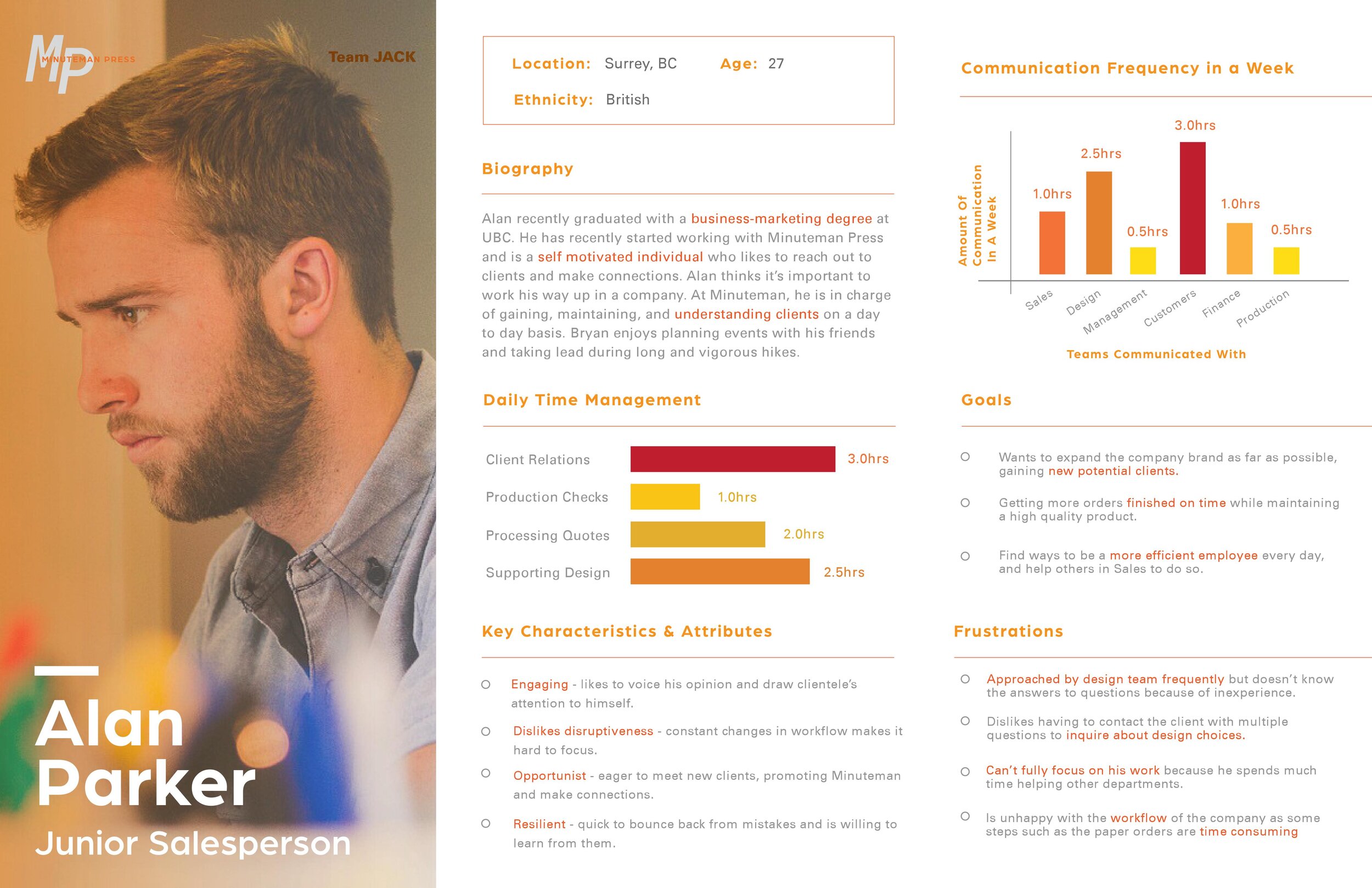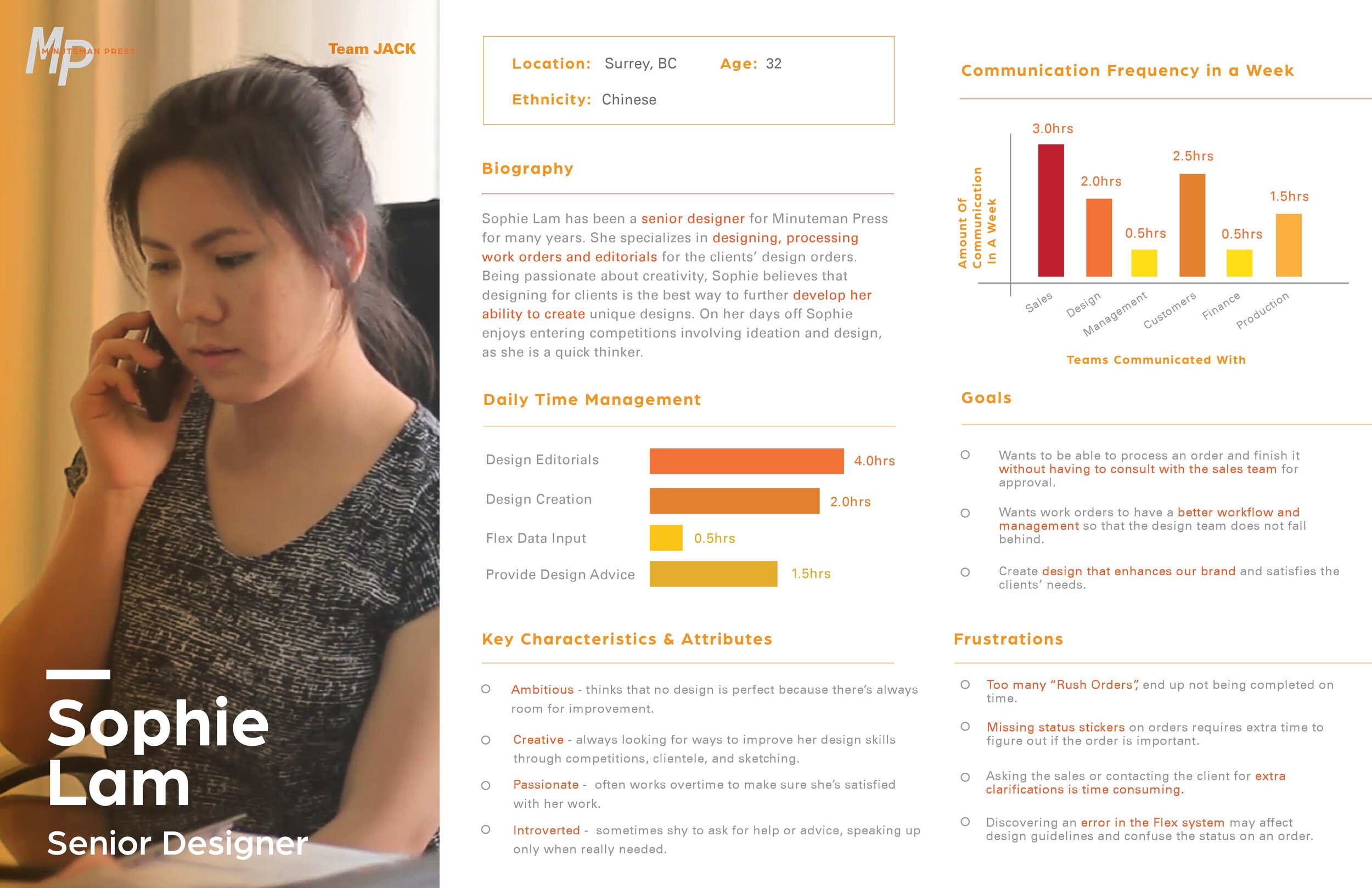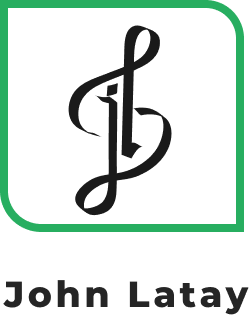User Research, User Experience, User Interface
Minuteman Press: Work Order & Work Flow Redesign
At a Glance: my role and contributions!
Role: User Researcher, Prototype Designer
Tools: Figma, Proto.io, Illustrator
Team Members: Andersen Li, Charles Do, Karen Lim
Date: January - April 2018
Contributions: Conduct research through ethnography, interviews, and more
Helped in creating different personas involved with their printing processes
Identified the issues that needed to be addressed with their current solution
Minuteman Press is a printing company that offers many printing services and products. My team and I were given the task of working with a company to understand the company’s workflow, communication, and the different roles of each employee so that we could identify any struggles or issues the company may be facing so that in the end we could design and offer a solution to them. My team and I applied different concepts of design practice and methods including ethnography, personas, participatory workshops, and prototyping. By the end, we had a design focus on the process of creating work orders within their software as we identified it to be the main source of an issue.
Identifying The Problems
Minuteman Press Roles & Responsibilities
During our researching phase, my team and I tried to identify the different departments that were part of Minuteman Press, and we’ve collected all of this through interviews and observations. Summarizing our findings, we put together a general overview displaying the different departments within Minuteman and included the many responsibilities each department was held accountable for. Having done this we realized that there was tension between the design and sales department, and often found work orders missing or uncertain about the status of the work order seeing whether or not they have been completed.
Research & Cultural Probes
Realizing the tension between the sales and design department allowed my team and me to focus on the issues they were facing as work orders were lost and that it was taking a long time to complete even just one work order. So my team and I devised and created a cultural probe to get an understanding of how often the different departments would talk with one another, and who specifically they talked to. By doing so we discovered that most of the communication was towards the sales and management, which we then based our personas around.
User Personas



Through the creation of our personas, we were able to identify each of their daily time management, goals, frustrations, and their communication frequency within a span of a week. With this, we realized that designers kept looking to the sales department for help with transcribing work orders as they had such a really flawed and old software system.
User Journey Workflow
After having created personas, my team and I worked to design and structure a user journey workflow. This user journey workflow was specifically designed for the customer sales representative. We’ve listed out their objectives throughout the day, their thoughts, behaviours, positive and negative experiences, and a place where we could implement our design opportunities.
Out Focused Solution
Old Software: Creating A Work Order
New Interface: Creating A Work Order
Challenges
Having worked with a pretty well-established printing company, my team and I had problems at first trying to identify what issues or problems the company may be facing. However, through the use of ethnography, in-person interviews, and cultural probes we were able to gather a lot of necessary information that was needed to devise a solution that could help solve the issues they currently faced.
Final Thoughts
I believe that my time working with Minuteman Press has given me many valuable experiences, many of which I can apply to user experience design. Overall, I feel like I have gotten a better understanding of how people may communicate on a day-to-day basis. The one thing I would have liked to change about this experience would be to have created more iterations of the work order redesign to see what other possibilities could potentially work.
© John Latay 2021

